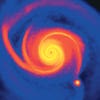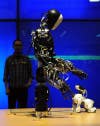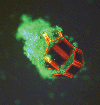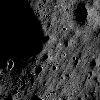Each issue of Popular Science opens with Megapixels–two of the most amazing images from the world of science and technology that month. Here, we’ve compiled them all from 2009 for your viewing pleasure, with some additional images from years past and present added to the mix.
Hairy Hearing
Inner ear hair cells. Colored scanning electron micrograph (SEM) of sensory hair cells from the organ of corti, in the cochlea of the inner ear. These cells are surrounded by a fluid called the endolymph. As sound enters the ear it causes waves to form in the endolymph, which in turn cause these hairs to move. The movement is converted into an electrical signal, which is passed to the brain. The V-shaped arrangement of hairs lies on the top of a single cell. Magnification: x21,000 when printed 10cm wide.
Brain Array
Here, microwires emerging from the green and orange tubes connect to two arrays of 16 microelectrodes. Each array is embedded in a small mat of clear, rubbery silicone. The mats are barely visible in this image. These microelectrode arrays sit on the brain without penetrating it, a step toward longer-lived, less invasive versions of “neural interfaces” that in recent experiments elsewhere have allowed paralyzed people to control a computer cursor with their thoughts. The new microelectrode arrays were placed in two patients at the University of Utah who already were undergoing brain surgery for severe epilepsy. The larger, numbered, metallic electrodes are used to locate the source of epileptic seizures in the brain, so the patients allowed the microelectrodes to be placed on their brains at the same time.
Rescue Bot
Robo-Q, rescue robot of the Tokyo Fire Department, collects a mock injured man during an anti-terrorism exercise conducted by the Tokyo Metropolitan Government at Tokyo Big Sight on November 7, 2008 in Tokyo, Japan. The rescue robot is designed to collect humans from environments dangerous to firefighters. The first anti-RDD (radiological dispersal device) terrorism field training exercise on the local government level in Japan is being held to improve management abilities on RDD or ‘dirty bomb’ attack cases by using the latest equipment, facilities and vehicles.
CCTV Tower in Beijing
CCTV’s new headquarters in Beijing, chosen as part of PopSci’s Best of What’s New for 2009, wears its engineering on its sleeve. So complex is this 768-foot-tall anti-skyscraper that the architects, the Netherlands-based Office of Metropolitan Architecture, chose to show off the structural seams for visual effect. The building is a continuous loop (resembling a twisted doughnut to some, “big shorts” to others), a shape that would normally be too stiff to stand up against the region’s famously epic earthquakes. Inventive engineering provides the solution. See the rest of our 2009 Best of What’s New list here
Ares Rocket Engine Test
On Sept. 10, 2009, NASA lit up the Utah sky with the initial full-scale, full-duration test firing of the first stage motor for the Ares I rocket. The 154-foot solid rocket motor produced heat two-thirds the temperature of the sun and its 12-foot-diameter cylinder delivered 3.6 million pounds of thrust.
Robo-Thespians
Humanoid robots produced by Japan’s Mitsubishi Heavy Industry, named Momoko (R) and Takeo (L) take part in a drama for the world’s first robot and human experimental theatre, written and directed by Japanese playwright Oriza Hirata at Japan’s Osaka University in Osaka, western Japan on November 25, 2008. The 20-minute performance was put on display for the media ahead of a possible run for the public next year.
Underground Nuclear Waste Depository, Hungary
A miner is seen in the main tunnel of an underground nuclear waste depository in Bataapati, 120 miles south of Budapest, Hungary. The depository will host Hungary’s radioactive waste in subsurface, granite facilities.
The Dubai Airshow As Seen From Orbit
The Dubai Airshow is the largest aerospace event in the Middle East and the fastest-growing airshow in the world. See it bigger here.
Homemade Helicopter
Wu Zhongyuan, 22, a local farmer, sits in his self-made helicopter, in Jiuxian county, Henan province August 1, 2009. The local government, out of safety concerns, later halted Wu’s plan to fly the helicopter. The aircraft took Wu two months to build and cost more than 10,000 yuan ($1,460).
Capillary network
This striking image actually shows part of an ox’s eye, and the capillaries in it. Capillaries are small blood vessels, which act as the connective network between arteries and veins. The capillaries have been made visible by injection of an insoluble dye into the artery that supplied them. [Wellcome Image Awards]
Boeing’s Latest Mobile Laser Weapon Tracks and Shoots Down Drone
Boeing recently announced it successfully tracked and shot down an unmanned aerial vehicle with a laser weapon. Actually, it shot down five UAVs at various ranges with the trailer-mounted Mobile Active Targeting Resource for Integrated eXperiments (MATRIX). Developed at the request of the Air Force Research Laboratory, MATRIX integrates with standard test-range radar, focusing a single energy beam on moving aerial vehicles and blasting them out of the sky. It’s the future of aerial seek and destroy, defending against always-orbiting unmanned craft. Read the full story here.
Volcano Light Show
Nature unleashes a torrent of energy as ash fills the air: After lying dormant for more than 9,000 years, the Chaitén volcano belched forth a 40,000-foot-tall ash plume in early May, touching off lightning and a monthlong eruption. The volcano, situated 700 miles south of Santiago, Chile, forced the evacuation of 8,000 people from the nearby village of Chaitén. It was roughly comparable in size to the 1980 Mount St. Helens eruption that released hundreds of millions of tons of debris in an explosion 1,000 times as powerful as the atomic bomb that was dropped on Nagasaki. Scientists suspect that volcanic lightning results from particles in the ash cloud rubbing together as the plume swirls. They aren’t sure about which types of particles generate the most static electricity, nor do they know how much energy is produced during the event. Of course, the lack of research done in the field is understandable: Even scientists, when they see an erupting, lightning-spewing volcano, tend to run in the opposite direction.
Robotic Jellyfish
Swimming around in their tank, these autonomous robotic jellyfish move alone or in a swarm and communicate with their brethren to avoid underwater collisions. Developed by German industrial-automation company Festo as an attention-grabbing experiment in cooperative robotics, each AquaJelly uses eight bendable “tentacles” to propel itself forward. But the AquaJelly does more than swim around and look pretty. Each is coated with conductive metal paint that draws the robot to a nearby charging station. It also has LED illumination, integrated pressure, light and radio sensors, and 11 infrared light-emitting diodes used for jelly-to-jelly communication. Above water, the robots use a short-range radio system to signal to one another that a charging station is occupied. Markus Fischer, the head of corporate design at Festo, hopes the AquaJelly will lead to a robotic workforce that can adapt to complicated tasks. Whereas today’s robot assembly lines can produce only a single product, “there is a possibility that [someday] several autonomous robots will work together and produce personalized products.”
ATHLETE Space Rovers Practicing in California
Two All-Terrain Hex-Legged Extra-Terrestrial Explorer (ATHLETE) rovers traverse the desert terrain adjacent to Dumont Dunes, CA. The ATHLETE rovers are being built to be capable of rolling over Apollo-like undulating terrain and “walking” over extremely rough or steep terrain for future lunar missions.
Laser Pulses Shoot Across Space to the LRO
NASA Goddard’s Laser Ranging Facility hits the LRO in stride 28 times per second across a quarter million miles of space. Read more about this amazing laser here.
Ferrofluid
Ferrofluids are made up of tiny magnetic fragments of iron suspended in oil (often kerosene) with a surfactant to prevent clumping (usually oleic acid). The fluid is relatively easy to make at home yet extremely expensive to buy on-line. How does $165 a liter sound? Pretty bad, right? Click here to learn how to make ferrofluids on the cheap.
Gaseous State
Scientists measure methane at the source: In a lush pasture near Buenos Aires, this cow and its compatriots are digesting important information: how much methane—a greenhouse gas 20 times as potent as carbon dioxide—is released by the country’s 55 million bovines. Researchers from Argentina’s National Institute of Agricultural Technology connected inflatable tanks to the cows’ first stomach, where methane is made, through a small hole between their ribs. By measuring methane production directly inside each cow, biologist Silvia Valtorta hopes to more accurately determine the country’s overall agricultural contribution to global warming. According to the data, an average cow releases more than 70 gallons of the stuff every day. But a change in diet could reduce that. Cows that eat mostly grain produce 20 to 25 percent less methane than grazing cows, and adding tannin—a bitter chemical found in wine—to the feed could lower it further.
The LHC’s First Collision
After 14 years of work and $5.5 billion, the LHC has survived faulty magnets, avian sabotage, and the threat of malevolent time travelers to finally collide its first particles. This image shows the collision as recorded by the Compact Muon Solenoid (CMS) detector. The red and blue bars represent subatomic particles flying forth from the proton collision like atomic shrapnel. When the LHC finally ramps up to full power, the 3,600 scientists at the will witness the most powerful particle collisions ever engineered by man.
Transiting the Sun
In this tightly cropped image, the NASA space shuttle Atlantis is seen in silhouette during solar transit, Tuesday, May 12, 2009, from Florida. This image was made before Atlantis and the crew of STS-125 had grappled the Hubble Space Telescope. The photographer made this image using a solar-filtered Takahashi 5-inch refracting telescope and a Canon 5D Mark II digital camera.
NASA’s Super-Pressure High-Altitude Balloon
This image, taken through a telescope, is of the newly designed super pressure balloon prototype at float altitude–during its groundbreaking flight test–over Antarctica. “This seven-million-cubic-foot super-pressure balloon is the largest single-cell, super-pressure, fully-sealed balloon ever flown. When development ends, NASA will have a 22 million-cubic-foot balloon that can carry a one-ton instrument to an altitude of more than 110,000 feet, which is three to four times higher than passenger planes fly.” (NASA)
Planetary Nebula NGC 6302
The newly-refurbished Hubble Space Telescope sent back its first breathtaking images after being repaired in September. Here, Nebula NGC 6302 with its butterfly wings of 36,000-degree gas.
Watershed Moment
Energy and environmentalism flow together to save the Grand Canyon: This frothy flume is what 300,000 gallons of water per second looks like. A 60-hour surge of almost 75 billion gallons, it’s part of an effort to revitalize the ecosystem of the Colorado River and the Grand Canyon. Teams from the U.S. Geological Survey, the Grand Canyon Trust and 25 other agencies have been working together since 1995 to develop a plan that will mimic natural flooding to redistribute sediment that would normally wash downriver. Moving the sediment from the central riverbed to the riverside rebuilds the sandbars downstream that serve as natural habitats and backwater nursery grounds for endangered fish species such as the humpback chub, as well as camping grounds for recreational use. This most recent discharge was the third of its kind. The first, in 1996, washed what little sediment there was downstream past the Grand Canyon and into Lake Mead. The second, in 2004, redistributed too little sand. Definitive results on the success of this last experiment should be available within the year and will serve as a guidepost for the next flow, which is as yet unscheduled.
Kurtsystems Horse-Training Car
A horse trots along a dirt road in Turkey, encased by the Kurtsystems Car equine training system. What may look like a complex horse-drawn carriage is actually a high-tech way to automate the delicate process of training racehorses. The horse isn’t pulling the four-and-a-half-ton, $427,000 vehicle. Rather, the vehicle keeps pace with the animal, and trainers fit the horse with equipment such as an electrocardiogram machine, oxygen masks and movement sensors to monitor its performance. They can then subtly regulate the horse’s speed for optimal training. Mehmet Kurt, the company’s founder, developed the device after his own horse died as a result of overtraining and human error. Kurt wanted a machine that would train horses to their full potential and eliminate such afflictions as lactic acidosis, by alerting trainers to muscular, circulatory and respiratory problems early.
Hearts Built to Order
A dead heart beats again, thanks to the efforts of scientists at the University of Minnesota. To rebuild and reanimate the organ, which was harvested from a rat, scientists first stripped the old heart cells away with a detergent typically found in shampoos. That left behind a collagen matrix—the protein fibers that hold groups of cells together and help give organs their overall shape—which they then reseeded with heart cells from a newborn rat. They attached the organ to electrodes and waited. Then it happened: The heart started to beat regularly. “We were all running around like crazy, scared that it would [just stop and] never beat again,” says team member Harald Ott, a surgical resident at Massachusetts General Hospital in Boston. The reanimation technique is now being tested on pig hearts, which are much closer in structure to human hearts than are rat hearts. Organs from built-to-order collagen matrices could help treat the five million Americans who suffer from heart failure and the some 2,600 patients currently waiting for transplant donors.
Mechanical Heart
McConkey imagines the heart as an elaborate machine, connected to the pipes and valves of brass musical instruments. The valves in this image were created from photographs of brass intruments and collaged together digitally, while the heart was converted from a pencil drawing using a computer and placed into the image. [Wellcome Image Awards]
Evacuation Around Chernobyl
Satellite images reveal the swaths of land that were abandoned around Chernobyl, near the Ukraine-Belarus border, between 1986 (left) and 1992 (right). People fled the area after the 1986 explosion at the Chernobyl Nuclear Power Plant (at the northwest corner of the dark Pripyat pond in the center of the photos) sent a plume of radioactivity into the atmosphere. The open farmlands they tended (reflective patches that show up in bright red and white on the left) became overgrown with natural vegetation (green-brown patches).
Mammoth Carving
A close-up view of a mammoth bone found in 2004 by a private fossil collector in Vero Beach clearly shows the sketch of a large elephant or mammoth. The bone and carving are estimated to be 12,000 to 14,000 years old and provide evidence that humans and large mammals coexisted in Florida during the Pleistocene period.
Extreme Weather
One of fifteen incredible extreme weather photographs (this one shows a tornado kicking up some serious dust) taken by Jim Reed, featured as part of a gallery and Q&A; on PopPhoto.com.
A Dark Thought
Plastic spheres block sunlight—and cancer: If you make a mess, just cover it up. That’s the theory behind the Department of Water and Power’s latest project in Los Angeles, which aims to prevent the formation of a carcinogen in two drinking-water sources, the Ivanhoe [pictured] and Elysian reservoirs. The unwanted chemical, bromate, forms when sunlight, chlorine and the naturally occurring mineral bromide intermingle. The city considered solutions, like a tarp or metal cover, but they were all too costly, labor-intensive or ugly. Then the ball idea, courtesy of LADWP biologist Brian White, floated to the top. The layer of three million black polyethylene balls prevents sunlight from completing the deadly cocktail. If it seems a bit temporary, it is—officials plan to retire the balls in five years, when a replacement underground reservoir near Griffith Park is finished.
Mars Parachute
A parachute destined for Mars experiences 81,250 pounds of drag force in the world’s largest wind tunnel at NASA Ames Research Center. Scientists went on to deploy the parachute 13 more times this past spring before deeming the 51-foot-diameter mammoth fit to land the next Red Planet rover, the Mars Science Laboratory. Cushioning a 2,000-pound rover from a supersonic descent in the thin Martian atmosphere demands special stamina. The chute gets its strength from stronger synthetic fiber, called Technora, in its suspension lines. Now a parachute identical to the one that was tested is packed and ready for the 2011 launch of the MSL mission, which will explore Mars for signs that it could have once supported life. “The parachute’s got a tough job,” says Douglas S. Adams, the MSL parachute senior engineer. “It passed [the tests] with flying colors.”
An Aerial View of Yellowstone’s Grand Prismatic Spring
The Grand Prismatic hot spring is a deep thermal spring, richly colored by growths of exotic heat-loving micro-organisms. Some believe they offer a glimpse of what the first life on earth would have looked like. Image from BBC Earth’s Yellowstone: Battle for Life.
Saturn’s Enceladus Moon
the Cassini spacecraft conducted a flyby of Saturn’s sixth-largest moon, Enceladus, snapping some rather breathtaking photos along the way. The flyby, whose purpose was to gather the highest-resolution photos ever of the moon’s southern polar region and to thermally map the “tiger stripe” terrain there, gathered some stunning images including some of the geyser-like plumes Cassini discovered on the moon’s surface during previous flybys. The photos themselves — provided by Cassini Imaging Central Laboratory for Operations (CICLOPS) — are raw and unprocessed, but along with the thermal data they should help researchers piece together a detailed map of Enceladus’s geologically active southern pole. Check out the full gallery here.
Anglerfish Ovary, Magnified 4x
This cross-section of an anglerfish’s ovary is reminiscent of another sea creature—the nautilus. Its otherwise-dull spirally composition caught James Hayden’s eye, so he used fluorescent hematoxylin and Eosin stains to illuminate the different details of the image. “I was trying to create an image that sharply defined the boundaries of the different parts of the specimen, so that the image could actually be used to demonstrate the morphology of the ovary and eggs,” he says.
Painted Ants
Ants in a laboratory nest are individually marked with dabs of paint to help researchers at the University of Arizona track their activities.
Kaboom!
Known primarily for manufacturing the Predator drone, General Atomics has also now moved into the weapons business, as demonstrated by this first ever successful test of their “Blitzer” rail gun. This involved the cannon firing a number of rounds down the range at the US Army’s Dugway Proving Grounds. Railguns were first proposed over a century ago, but have not yet made their appearance on the battlefield. They are similar to regular artillery pieces, in that they fire a giant shell, but different in that they do so without the use of combustion. Read the full story here.
Sailboat Inspection
Shore crew Jimmy Hellberg (SWE) inspecting the keel of Volvo Open 70, Ericsson 3 at the Ericsson Racing Team training camp in Lanzarote, Spain.
Soyuz Expedition 18 Lands
The Soyuz TMA-13 spacecraft, carrying Expedition 18 Commander Michael Fincke, Flight Engineer Yury V. Lonchakov and American spaceflight participant Charles Simonyi, lands, Wednesday, April 8, 2009, near Zhezkazgan, Kazakhstan. Fincke and Lonchakov returned after spending six months on the International Space Station, and Simonyi returned from his launch with the Expedition 19 crew members 12 days earlier.
Zebrafish Retina
This fireworks display is actually a microscope image of a zebrafish retina that’s been immunolabeled for ultraviolet cones (magenta) and rods (green). The image shows the regular pattern of the cones and the scattered pattern of the rods typical of a normal fish. The labeling was performed by Karen Alvarez-Delfin, doctoral candidate at Florida State University.
Developing mouse head
These three alien heads all represent 3D images of a developing embryonic mouse head. The images were created using 3D reconstruction of high resolution episcopic microscopy (HREM) data. Computer software can be used to visualize or highlight different structures within the head. [Wellcome Image Awards]
The Birth of a Planet
At this moment, in the constellation Taurus, a planet is forming in the dust and debris surrounding the star HL Tau. The protoplanet, named HL Tau b, may be the youngest yet discovered. A team of British astronomers found HL Tau b when they noticed an extra-bright clump in a radio image of its parent star from the Very Large Array radio telescopes at the National Radio Astronomy Observatory in New Mexico. The young planet is believed to be only a few hundred thousand years old and 930 million miles in diameter. Because its parent star is still developing, the protoplanet won’t condense into its final form—a ball of hydrogen and helium gas about the size of Jupiter called a gas giant—for at least another million years, says astronomer Anita Richards, a member of the research team. Further observations will help scientists learn how gas giants like Jupiter and Saturn formed in our own outer solar system.
Berti the Robot
Berti (or Bristol Elumotion Robotic Torso 1), developed by Elumotion, interacts with a Sony Aibo dog robot at the Science Museum in London on Tuesday February 17, 2009. Berti is less than two years old but is helping scientists develop artificial intelligence outstripping anything previously seen before.
Beetles
An obscure species of beetle has shown how brilliant white paper could be produced in a completely new way. A team from Imerys Minerals Ltd. and the University of Exeter has taken inspiration from the shell of the Cyphochilus beetle to understand how to produce a new kind of white coating for paper.
Watertight
Millions of nanosize “nails” form a highly repellent surface: A trio of prismatic drops (left to right: water, ethylene glycol and ethanol) balances on a new ultra-repellent surface invented by scientists at the University of Wisconsin–Madison. The surface, made up of silicon spikes just 400 nanometers wide, physically repels a wide variety of liquids, including water, oil, solvents and detergents. Previously, scientists relied on chemical modification to make surfaces repel liquids, a time-consuming process. In the end, each coating worked to repel only certain liquids, and oil-repellent surfaces simply weren’t possible to manufacture. The new surface blocks almost all liquids. Researchers can also turn off the physical barrier: An electric voltage instantly draws liquids down between each spike, where they spread out along the base upon which the spikes sit. This switchable quality makes the surface perfect for controlling liquids in “lab on a chip” chemical reactors, and its super-repellent properties could help keep helicopter blades free of heavy, altitude-robbing water and ice.
When Whales Walked the Earth
A newly unearthed fossil is the missing link between land and marine mammals: Standing two to three feet tall on legs adapted to wade through shallow water, the 48-million-year-old Indohyus is the missing link between modern-day whales and their land-lubbing ancestors. Hans Thewissen of the Northeastern Ohio Universities Colleges of Medicine and Pharmacy recovered the skeleton in rocks from Kashmir, a disputed region between India and Pakistan, where the deer-like herbivore lived during the Eocene epoch, 56 to 34 million years ago. The extreme thickness of its bones is a trait seen often in animals that are aquatic waders (thick, heavy bones counteract buoyancy and allow the animal to stay underwater more easily), and chemical traces in its teeth indicate that the animal ate plants in a freshwater environment. Scientists know that Indohyus belongs in the evolutionary path with whales because it has skeletal similarities to both modern whales and known primordial whale ancestors.
Fluorescent Micrograph of a Microgripper Tool
A microgripper is a microscopic tool that can grasp and manipulate microscale objects safely. This is a fluorescent micrograph of a microgripper that was biochemically-triggered by cell media to close around L929 fibroblast cells. The cells were stained with a LIVE/DEAD assay and glow green under UV fluorescence, indicating that they are alive. The polymer used in the microgripper joints is also UV reactive and appears reddish-orange. The microgripper features phalanges made from gold-plated nickel which enables remote magnetic manipulation and can also be triggered by mild heating to ~40ºC.
First Image from the Lunar Reconnaissance Orbiter
NASA’s Lunar Reconnaissance Orbiter sent its first images back to Earth on June 30, 2009, after activating its low-resolution wide-angle and high-resolution cameras.
Magnetic Monopoles
Magnetic monopoles are created when the spin of an ion in one corner of a spin ice crystal is knocked askew, creating a monopole (red sphere) and adjacent antimonopole (blue sphere).
The World’s Most Powerful Supercomputer
A supercomputer known as Jaguar has finally bested IBM’s Roadrunner supercomputer in the biannual TOP500 list, but researchers have already begun looking into exascale supercomputers that consist of 100 million cores and run 1,000 times faster than Jaguar. Read the full story here.
The World’s Tallest Ferris Wheel
Spinning 580 feet above the city, the Singapore Flyer is the world’s largest observation wheel. Like its older sibling, the 443-foot-diameter London Eye, the 490-foot Flyer has a stiff rim supported by long cable spokes (the extra 90 feet of height comes from the Flyer’s base). Unlike the Eye, the Flyer’s rim is nearly invisible—a feat achieved by rearranging the cable spokes into triangles, which pull in diagonally from the inner and outer sides of the rim. Because of space constraints on-site, the Flyer had to be constructed upright. Engineers put up the rim in sections supported by temporary struts until they had a full circle and then pulled the cables taut.
Kepler’s Eye
Technicians from Ball Aerospace inspected the honeycomb structure of the Kepler Space Telescope’s primary mirror. The mirror has been 86% light-weighted; that is, it only weighs 14% of what a solid mirror of the same dimensions would. The mirror blank was made out of ultra-low expansion glass, or ULE, by Corning Glass Works. The optical polishing of the mirror was performed by Brashear LP. Kepler launched On March 7, 2009, on a 3 1/2 year mission to survey the more than 100,000 sun-like stars in the Cygnus-Lyra region of our Milky Way galaxy. It is expected to find hundreds of planets the size of Earth and larger at various distances from their stars. There is now clear evidence for substantial numbers of three types of exoplanets; gas giants, hot-super-Earths in short period orbits, and ice giants. The challenge is to find terrestrial planets, especially those in the habitable zone of their stars where liquid water might exist on the surface of the planet.
Desert Rift
This 35-mile long, 20-foot-wide rift in the Ethiopian desert opened in 2005. Though some geologists at the time suggested that it would one day become a new ocean, that position was considered controversial until recent research confirmed it. This research showed that the geological processes that are creating the rift are nearly identical to those that occur at the bottom of oceans.
Robo-Einstein Learns to Smile
A hyper-realistic Einstein robot at the University of California, San Diego learned, through a process of self-guided machine learning, to make facial expressions (by way of about 30 facial ‘muscles’, each moved by a miniscule servo motor connected to the muscle by a string). Right now, the servos must be set up by an expert so that they pull the muscles in the exact combinations to form facial expressions, but the researchers at the Machine Perception Laboratory at the University are using the Einstein-bot to find ways to automate this process, looking to both machine learning and developmental psychology.
Iron Oxides Color Blood Falls, Antarctica
Iron oxides stain the snout of the Taylor Glacier, McMurdo Dry Valleys, Antarctica, forming a feature commonly referred to as Blood Falls. The iron originates from ancient subglacial brine that episodically discharges to the surface. Outflow collected at Blood Falls provides access to a unique subglacial ecosystem that harbors a microbial consortium which actively cycles iron, sulfur and carbon for growth. This image relates to an article that appeared in the April 17, 2009, issue of Science, published by AAAS. The study, by Dr. Jill Mikucki and colleagues was titled, “A Contemporary Microbially Maintained Subglacial Ferrous ‘Ocean’.”
Mount Redoubt Eruption Seen from Space
This satellite image provided by GeoEye and taken Monday March 30, 2009 shows Alaska’s Mount Redoubt volcano as it emits a steady ash plume.
Rusted Old Coin, Magnified 40x
The rust and dirt on this old coin transforms into a greenish-brown moonscape under the microscope. Found buried under the sand, the coin may have newfound value as a piece of abstract art.
A Happy Nanoscale Accident
A moment’s inattention creates a dramatic nano-landscape: Sure, these look like mushroom clouds of nuclear doom, but they’re really just evidence that nanoscale construction is tricky business. Engineering physicist Fanny Béron of the Polytechnic School of Montreal accidentally left the power on for too long when making 175-nanometer-wide wires. When the wires overflowed from their mold, creating the lumpy structures [here colored orange], she turned the error into art by etching away the molds and imaging the remaining malformed nanowires using a scanning electron microscope. Digitally added color completed the Armageddon effect. The image won first place at the Materials Research Society’s fall 2007 “Science As Art” competition.
Spying on a Hostile Landscape
Satellite imagery of a volcanic desert reveals its greener past: The sands of Harrat Khaybar, in the Saudi Arabian desert, weren’t always so parched. Evidence on the ground, such as fossilized hippo teeth, has led geologists to conclude that this dessicated lava field was once a lush grassland. But the case is even clearer from space, as seen in this photograph, taken from the International Space Station in March. The crater in the center of the image is a “tuff cone,” a feature that forms when magma and water mingle—good evidence of a once-wetter climate. (A volcanic eruption, less than 5,000 years old, during the desert’s present arid state, caused the dark basaltic field to the right.) Learning how to study our planet from orbit will help us do the same above other planets. On August 11, for example, the Cassini orbiter’s cameras flew past Saturn’s moon Enceladus to photograph its water-ice geysers, evidence that liquid may be underneath.
CERN Scientists Rejoice
The CERN scientists’ reaction as the LHC finally collided its first particles.
USS Annapolis Breaks the Ice
The Los Angeles-class submarine USS Annapolis (SSN 760) seen on the surface of the Arctic Ocean after breaking through three feet of ice during Ice Exercise (ICEX) 2009. With the support from the University of Washington Applied Physics Laboratory, ICEX 2009 enables the Submarine Force to operate and train in the challenging and unique environment that characterizes the Arctic region.
Wrinkled Photoresist, Magnified 200x
When objects like circuits are going to be chemically etched, they are often first covered with photoresist. Photographer Dr. Pedro-Barrios Perez inspects the photomechanical substance to make sure it will work when it goes to production. So why did he submit this picture? “It looks like the sun warming up the earth with its mighty energy waves,” he says. Interesting, because photoresist sometimes wrinkles when exposed to heat.
Fast Freeze
A high-concept sports car becomes a high-minded comment on global warming: At the center of this two-ton ice sculpture is a 187mph hydrogen-powered BMW racecar. To create the piece, part of BMW’s Art Car Collection (arriving at the Gallery of Modern Art in Munich, Germany, this month after a stint at the San Francisco Museum of Modern Art), artist Olafur Eliasson replaced the plastic shell of the H2R concept car with two layers of steel mesh. The lower layer follows the contours of the car; the upper layer holds stainless-steel spines that give the sculpture its shape. Technicians then set the car and mesh inside a room-size 15ºF freezer and spent three days misting the contraption with 500 gallons of water, ensuring a smooth finish by waiting for one thin layer of ice to solidify before applying another. Although the process consumes electricity, the artist requires each museum to use energy from renewable sources, in keeping with the sculpture’s goal of prompting thought about cars and climate change. When it’s time to move the car to the next destination, the museum unplugs the freezer and simply lets the sculpture melt.
Seizure
Roger Hiorns, one of the shortlisted artists for this year’s Turner Prize, creates arresting sculpture and installation combining unusual materials. His exploration of chemical processes took spectacular effect in “Seizure”, shown here, in which a derelict flat in South London was transformed into a magical cave of blue crystals.
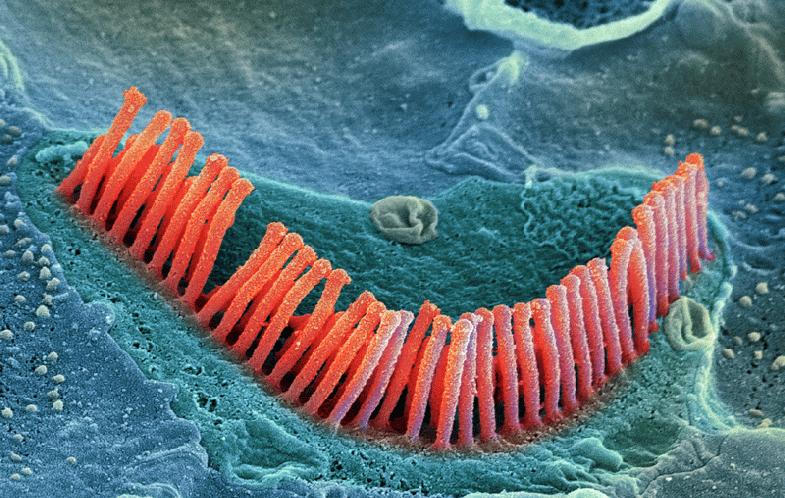



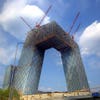





![This striking image actually shows part of an ox's eye, and the capillaries in it. Capillaries are small blood vessels, which act as the connective network between arteries and veins. The capillaries have been made visible by injection of an insoluble dye into the artery that supplied them. [<a href="http://www.wellcomeimageawards.org">Wellcome Image Awards</a>]](https://www.popsci.com/uploads/2019/03/18/OZUJ2P52IUBE5F77CV4ZRJWSVQ.jpg?auto=webp&optimize=high&width=100)




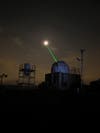








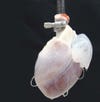
![McConkey imagines the heart as an elaborate machine, connected to the pipes and valves of brass musical instruments. The valves in this image were created from photographs of brass intruments and collaged together digitally, while the heart was converted from a pencil drawing using a computer and placed into the image. [<a href="http://www.wellcomeimageawards.org">Wellcome Image Awards</a>]](https://www.popsci.com/uploads/2019/03/18/GLPBB63SGS5YEYTO7K26IVAQDQ.jpg?auto=webp&optimize=high&width=100)


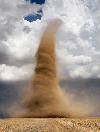



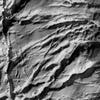




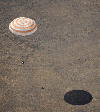
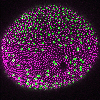
![These three alien heads all represent 3D images of a developing embryonic mouse head. The images were created using 3D reconstruction of high resolution episcopic microscopy (HREM) data. Computer software can be used to visualize or highlight different structures within the head. [<a href="http://www.wellcomeimageawards.org">Wellcome Image Awards</a>]](https://www.popsci.com/uploads/2019/03/18/S3MMPL37NAN6YCFA6UQEHUOBLY.jpg?auto=webp&optimize=high&width=100)
